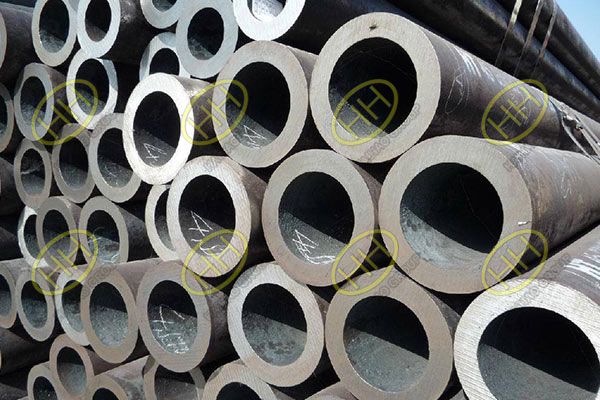The alloying elements play solid solution strengthening, dispersion strengthening and improving the oxidation resistance and corrosion resistance of steel. The specific analysis is as follows.
1.Carbon is the most obvious element of solid solution strengthening in steel. With the increase of carbon content, the short-term strength of steel increases, while the ductility and toughness decrease. For martensitic steels such as P91, the increase in carbon content will Speed up the spheroidization and aggregation speed of carbides, accelerate the redistribution of alloying elements, and reduce the weldability, corrosion resistance and oxidation resistance of steel. Therefore, heat-resistant steels generally hope to reduce the carbon content, but the carbon content is too low. The intensity will decrease. Compared with 12Cr1MoV steel, the carbon content of P91 steel is reduced by 20%, which is determined by comprehensive consideration of the above factors.

A335 P91 seamless steel pipes
2.A335 P91 steel contains trace amounts of nitrogen, and the role of nitrogen is reflected in two aspects. On the one hand, it plays a role of solid solution strengthening. The solubility of nitrogen in steel at room temperature is very small. During welding heating and post-welding heat treatment in the heat-affected zone of P91 steel, the solid solution and precipitation process of VN will occur successively: during welding heating The austenite structure that has formed in the heat-affected zone increases due to the dissolution of VN, and the degree of supersaturation in the normal temperature structure increases. In the subsequent post-weld heat treatment, fine VN precipitates, which increases the stability of the structure , Improve the lasting strength value of the heat-affected zone. On the other hand, P91 steel also contains a small amount of A1. Nitrogen can form A1N with it. A1N dissolves into the matrix in a large amount above 1 100℃, and re-precipitates at a lower temperature, which can achieve a better dispersion strengthening effect.
3.The addition of chromium is mainly to improve the oxidation resistance and corrosion resistance of heat-resistant steel. When the chromium content is less than 5%, it will start to oxidize violently at 600°C, and when the chromium content reaches 5%, it has good oxidation resistance. The 12Cr1MoV steel has good oxidation resistance below 580℃, the corrosion depth is 0.05 mm/a, and the performance begins to deteriorate at 600℃, and the corrosion depth is 0.13 mm/a. The chromium content of P91 is increased to about 9%, and the use temperature can reach 650℃. The main measure is to make more chromium dissolved in the matrix.
4.Both vanadium and niobium are strong carbide forming elements. After being added, they can form small and stable alloy carbides with carbon, which has a strong dispersion strengthening effect.
5.The main purpose of adding molybdenum is to improve the thermal strength of steel and play a role of solid solution strengthening.







